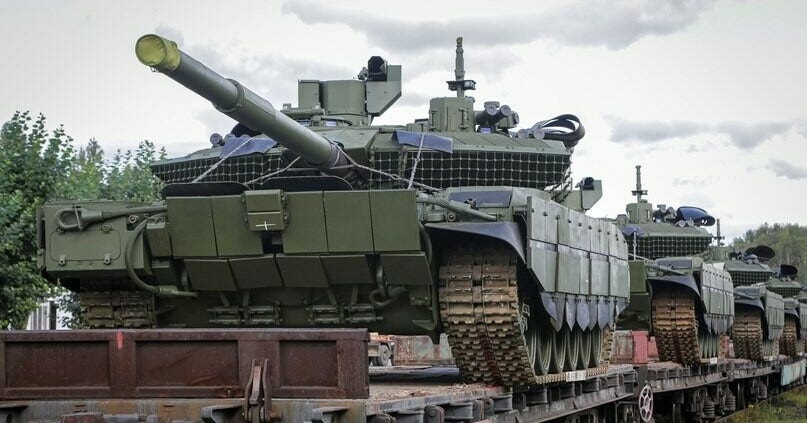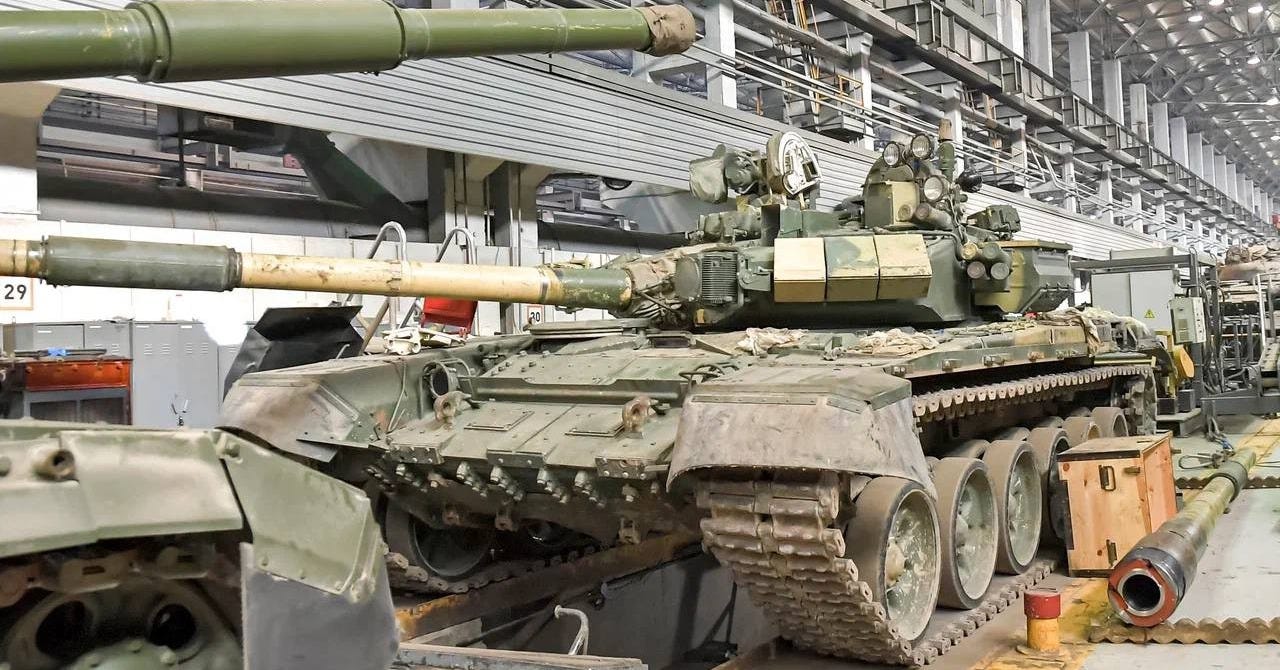Russia Builds Hundreds of New T-90M Tanks—Maybe Saving Some for War with NATO
Production of T-90Ms has swelled from 70 in 2022 to more than 200 in 2025, despite sanctions
Russia’s main tank plant builds more than 200 of the latest T-90M tanks every year. It’s enough tanks to replace the T-90Ms Russia is losing in Ukraine—especially as Russian regiments use fewer and fewer heavy armored vehicles—while also building up a small reserve of the tanks for possible future conflicts.
That’s the conclusion of a new study from Conflict Intelligence Team, a pro-Ukraine analysis group. And it aligns with an earlier assessment by independent analyst Jakub Janovsky.
A few months ago, Janovksy concluded Russia’s Uralvagonzavod tank factory, in Sverdlovsk Oblast 1,000 miles from Ukraine (and thus fairly safe from Ukrainian raids), has been building between 150 and 200 of the 51-ton, three-person tanks. The T-90M is heavily armored and boasts modern optics and a powerful 125-millimeter main gun.
CIT’s own numbers are similar. “According to our estimates, Uralvagonzavod produced 60 to 70 T-90M tanks in 2022,” CIT reported. “In 2023, amid efforts to mobilize the defense industry, output may have increased to 140 to 180 tanks, and by 2024, it may have surpassed 200 units annually, possibly approaching a production rate of 250 to 300 tanks per year.”
For comparison, the U.S. Army’s own tank plant in Ohio, operated by General Dynamics Land Systems, has been producing just a few dozen M-1 Abrams tanks annually—down from 90 a year in the early 2020s. To be fair to the Americans, they’re not mired in a costly mechanized war, and they plan to boost Abrams production with the introduction of a new variant in the coming years.
“Since the war began, at least 540 to 630 T-90M tanks have been manufactured—this includes both newly built and modernized vehicles” based on older T-90 and T-90A hulls, CIT noted. “Given that over 130 of them have been destroyed, an estimated 410 to 500 remain in service.”
15% of Russia’s tanks
According to CIT, the best T-90Ms—now fitted with drone-jammers and add-on anti-drone cages—account for approximately 15% of the tanks deployed on the Russian side of the front line in Ukraine.
But Russian regiments and brigades are using fewer and fewer tanks and other heavy armored vehicles after staggering losses in the first three years of Russia’s wider war on Ukraine. Total Russian losses now exceed 20,000 armored vehicles and other heavy equipment, including 4,100 tanks. Ukrainian mines, artillery, drones and anti-tank missiles account for most of the losses.
Running low on many vehicle models but flush with fresh manpower thanks to strong recruitment—itself partially driven by generous enlistment bonuses—the Russians are attacking on foot or in inexpensive civilian-style vehicles. Tanks and other purpose-made combat vehicles now account for just 10% of Russia’s vehicle losses in Ukraine.
“Assuming a slowdown in tank losses in 2025 due to less excessive use of tanks, current production rates would allow Russia to sustain its tank force for several more years,” Ukrainian analysis group Frontelligence Insight observed. At the same time, Russia could hold in reserve a division or two of T-90Ms, saving them from some other war. A possible future attack on NATO’s easternmost members, for example.
T-90M production could continue to ramp up. “Uralvagonzavod is actively working to expand its production capacity,” CIT assessed. “The company has issued tenders for the procurement and installation of welding stations and machining stands for tank hulls. This equipment is expected to operate 24/7. These steps suggest a likely further increase in production speed.”
But don’t expect a lot more tanks, fast. “A substantial increase in new tank production would require far greater investments in new assembly lines and a significant expansion in the acquisition of modern machinery,” CIT predicted.
Sanctions have throttled the supply of some critical components for the T-90M—in particular, optics and circuit boards. But Russian industry is gradually replacing foreign parts with locally-made ones.
“It is clear that while Russia continues to grapple with production delays, quality-control issues and the challenges of sourcing components under sanctions, it is also making tangible progress in both manufacturing and the deployment of new technologies,” Frontelligence Insight explained.
While the Ukrainians continue destroying T-90Ms, their allies could help by starving Uralvagonzavod of parts. Tighter sanctions and better enforcement of export controls “remain essential to constraining the growth of Russia’s military-industrial capacity and to reducing the risk of renewed aggression against Ukraine or military confrontation with NATO,” CIT warned.
Read more:
It Has Cost Russia Exactly One Armored Truck to Capture 60 Square Miles of Ukraine's Sumy Oblast
Parts of no fewer than 18 Russian regiments and brigades, each with 2,000 or more troops, have marched into northern Ukraine’s Sumy Oblast. And by “marched,” I mean literally marched.







